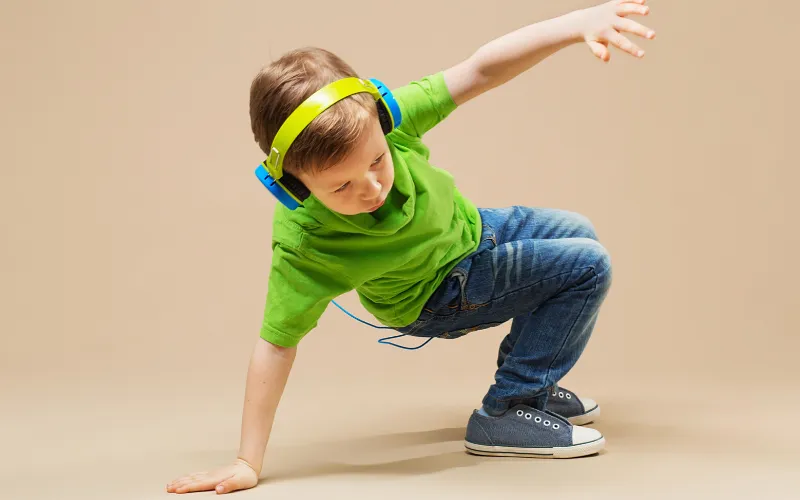Harmony in
Neurodiversity
THE BLOG
Welcome to Harmony in Neurodiversity, a blog dedicated to exploring the profound impact of music and positive parenting strategies on the lives of neurodivergent individuals. Join Samantha, a board-certified Neurologic Music Therapy fellow and a passionate Positive Discipline Parent Educator, as she shares her expertise in leveraging the power of music and effective parenting approaches to support and empower neurodiverse communities.
In her blog posts, Samantha delves into the intricate connections between music and the brain. She explores how specific musical elements and interventions can enhance cognitive functions, regulate emotions, improve communication, and promote social interaction among neurodivergent individuals. Through insightful articles and case studies, she demonstrates how rhythm, melody, and lyrics can serve as powerful tools for therapeutic interventions, fostering growth and self-expression.
Positive Discipline Parenting Strategies:
Drawing from her expertise as a Positive Discipline Parent Educator, Samantha sheds light on nurturing positive relationships between parents and neurodivergent children. Her blog offers practical advice, evidence-based strategies, and real-life anecdotes that empower parents and caregivers to cultivate respectful, encouraging, and effective parenting techniques. From setting clear boundaries to fostering a supportive environment, Samantha guides readers in navigating the challenges and joys of parenting neurodiverse children.
Exploring Intersectionality:
Samantha doesn't limit her discussions to singular approaches. Instead, she delves into the intersectionality of Neurologic Music Therapy and Positive Discipline Parenting, illustrating how these methodologies complement each other. Through her insightful content, she showcases how the harmonious integration of music-based interventions and positive parenting strategies can create holistic support systems for neurodivergent individuals, promoting their well-being and personal growth.
Community Engagement and Resources:
Additionally, Samantha fosters a vibrant online community where readers can engage, share experiences, and seek advice. She curates a wealth of resources, including recommended readings, workshops, and practical tools, empowering her audience to implement valuable insights into their lives effectively.

Musical Breaks: A Simple Way to Reset and Reconnect
When I was younger, my mom knew exactly how I was feeling based on how I played the piano. I could play the same song in an angry, sad, or happy way depending on how I was feeling. As a person with ADHD, I experienced high highs and low lows in my mood. When I started feeling out of control, music was my escape to prevent a meltdown.
Music can be powerful in preventing meltdowns even if you're not a trained musician. Using music proactively can help prevent meltdowns, reduce stress, and create space for play and connection. Whether it is five minutes or just a few deep breaths to the rhythm of a song, musical breaks can make a huge difference in your day.
Why Music?
Music supports the brain and body in so many ways. It can:
Lower stress levels
Release endorphins and boost mood.
Strengthen the immune system.
Enhance memory and focus.
Ground you in the present moment.
Offer a creative outlet when words are not enough.
Easy Musical Break Ideas
You do not need to be a musician to try these out. Here are a few quick and fun ways to bring music into your day:
Play an Instrument: It does not matter what or how. Just improvise. Tap a drum, strum a ukulele, or play around on a piano. Try using only the black keys on the piano for a cool sound that sounds good even if two people are playing together.
Listen to Music: Create playlists based on moods like happy, mad, or overwhelmed. Let your child help choose the songs so they feel ownership and connection in their playlists.
Join In: Sing along, grab an egg shaker, or tap along with the beat of recorded music. Movement and participation deepen the sensory experience.
Dance Party: When the energy is off, turn up a favorite song and dance it out. This works solo or as a family.
Yoga or Progressive Muscle Relaxation with Music: Use YouTube or apps to guide you through calming exercises that combine movement with music.
Fill-in-the-Blank Songwriting: This is a fun and low-pressure way to write songs. Search for “Mad Lib songs” and let your child fill in the blanks. Then sing the silly or serious result together.
Blues Format Fun: Use a simple problem-and-solution format to create blues-style songs like “I am hungry... I am hungry... I am going to eat a sandwich.”
Make It a Habit
These musical moments do not have to be saved for when things feel hard. Use them proactively, before stress builds up, and you will start to notice shifts in both mood and connection.
Try one today and see how it feels. If you need ideas for songs, instruments, or how to adapt any of these for your child, I am here to help.
For more strategies on using music in your everyday life, check out episode 105 of the Every Brain is Different podcast.


